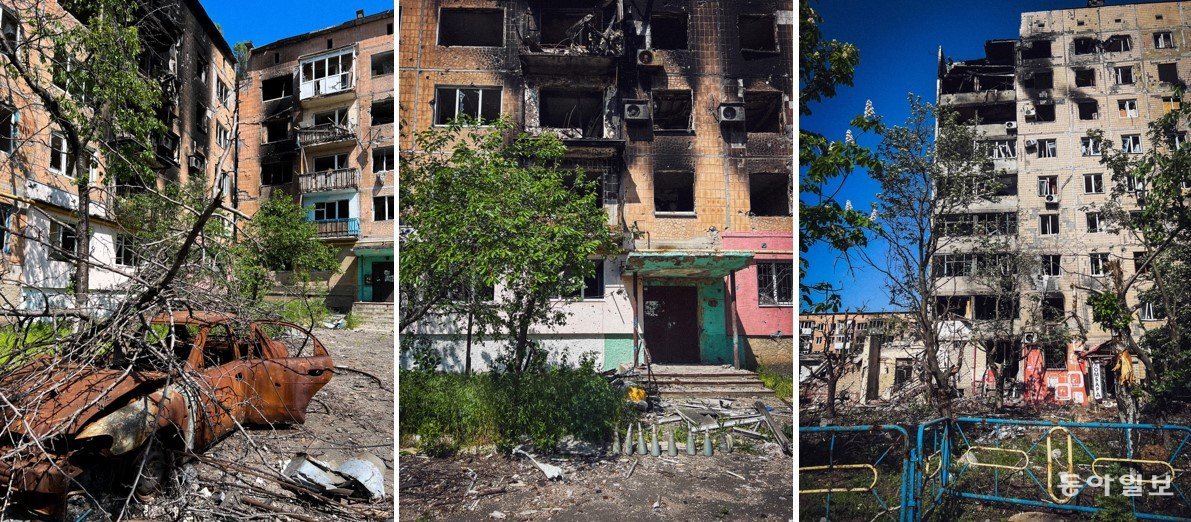In the first half of last year, a video of a Ukrainian family who was shot and killed in a car was posted on Facebook and Instagram. It is believed that he was shot while fleeing the Russian occupied territory. This video was automatically deleted immediately after upload.
Ihor Zakharenko (46), a Ukrainian video director who posted the video, appealed to the British BBC on the 1st (local time), saying, “I refuted Russia’s claim that no civilians were harmed and wanted to tell the world what really happened.” did.
Social media uses artificial intelligence (AI) to monitor content for violence and sensationalism. If it is judged to have violated its own guidelines, it will be deleted immediately without notifying the user. This is why the video uploaded by Zakharenko was deleted.
In cases such as Zakharenko, criticism comes that the current monitoring method eliminates data that can be used for war crime accountability. However, some raise concerns that social media operators should not make exceptions.
To verify Zakharenko’s claim, the BBC’s investigative team created several new social media accounts and uploaded the video. On Instagram, which is run by Facebook’s parent company Meta, videos uploaded to three out of four accounts were deleted within a minute of uploading. It was uploaded to YouTube with an age limit so that minors could not see it, but it was deleted within 10 minutes of all three accounts. The reporting team objected, saying, “Please restore the video because it contains evidence of war crimes,” but it was dismissed.
 zoom inA photo that Zakharenko posted on his Instagram on the 29th of last month. It is the appearance of an apartment complex with all the windows broken and burned by the bombing. Zakharenko posted this photo on the account, which has nearly 60,000 followers, along with the caption, “A photo taken in Donetsk (a battleground in eastern Ukraine).” He is still conveying the situation of the war in Ukraine through photos and videos. Photo courtesy of Ihor Zakarenko’s Instagram.
zoom inA photo that Zakharenko posted on his Instagram on the 29th of last month. It is the appearance of an apartment complex with all the windows broken and burned by the bombing. Zakharenko posted this photo on the account, which has nearly 60,000 followers, along with the caption, “A photo taken in Donetsk (a battleground in eastern Ukraine).” He is still conveying the situation of the war in Ukraine through photos and videos. Photo courtesy of Ihor Zakarenko’s Instagram.The BBC reported that “Meta and YouTube have been told that there are cases where exceptions are made for the public good, even for violent videos, but as the case of Zakarenko shows, videos recording violence against civilians are often deleted immediately after upload.” The reason why this happens is that AI cannot distinguish videos of human rights violations from other violent war videos.
The problem is that social media content is increasingly being adopted as evidence in the investigation of war crimes. According to Human Rights Watch (HRW), an international human rights organization, at least 10 cases (Germany, Finland, Netherlands and Sweden) were counted as of 2020 in which convictions were based on videos or photos posted on social media.
In 2017, a Swedish court sentenced a Syrian man to life imprisonment for war crimes. Syrian Haitham Omar Sakan applied for asylum in Sweden in 2016, but was prosecuted after being caught in an online video found by Swedish authorities. A video uploaded by the New York Times (NYT) in 2013 showed seven Syrian government officials being executed by rebels, and Sakan also participated in the execution. A European national investigator told HRW, “Social media is absolutely critical when investigating events in countries you can’t get to in person.”
Experts suggest that even if the video is deleted, it should be preserved. Social media operators have the right to crack down on postings, and operators must protect users from violent videos, but supplementary measures are needed. Beth Van Schach, U.S. Ambassador to the United Nations for International Criminal Justice (GCJ), said, “Social media operators need to create retention mechanisms so that this information can be used for future accountability.” We have to respond,” he told the BBC.
Source: Donga
Mark Jones is a world traveler and journalist for News Rebeat. With a curious mind and a love of adventure, Mark brings a unique perspective to the latest global events and provides in-depth and thought-provoking coverage of the world at large.